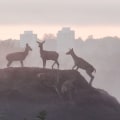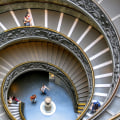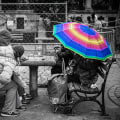Are you a street art photographer looking for ways to add atmosphere to your images in post-processing? If so, you've come to the right place! In this article, we'll explore various methods of adding atmosphere to your photos in post-processing and how these techniques can help you create stunning street art images. Post-processing is a key part of photography, and it's often the difference between a good photo and a great one. With the right post-processing techniques, you can make your street art photos stand out from the crowd. We'll look at how to use color grading, contrast adjustments, and other techniques to add atmosphere to your images. We'll also discuss how to use special effects such as lens flares and light leaks to create an even more atmospheric look. So let's get started!
Techniques and Tools for Adding Atmosphere
Post-processing is a great way to add atmosphere to your street art photography images.There are a variety of techniques and tools you can use to achieve the desired effect, such as curves adjustments, color grading, and more.
Curves Adjustments
Curves adjustments are an incredibly powerful tool for adding atmosphere to your photos. With curves adjustments, you can selectively adjust the lightness and darkness of an image, as well as the contrast and saturation. This can be used to create a moody atmosphere or make subtle changes to the overall look of your image.Color GradingColor grading is another powerful post-processing technique for adding atmosphere to your images. You can use color grading to create a unique look for your photos, such as making them appear warmer or cooler. You can also use color grading to add depth and interest to your images.
Other Tools
In addition to curves adjustments and color grading, there are a variety of other tools you can use to add atmosphere to your photos.These include blending modes, vignettes, and film emulation. Blending modes allow you to blend two images together to create unique effects, while vignettes help draw the viewer's attention to the center of the frame. Film emulation allows you to give your photos a classic look by applying the same characteristics of classic films.
Step-by-Step Guide for Adding Atmosphere
Adding atmosphere to your images in post-processing can be a great way to enhance the impact of your street art photos. Here’s a step-by-step guide for adding atmosphere:1.Choose the right post-processing software. There are many different options available, such as Adobe Photoshop, Lightroom, or even free online tools like Pixlr.Choose the one that works best for you and your photos.
2.Adjust the exposure.
Adjust the exposure settings to create a moody atmosphere in your photos. Lowering the exposure will darken the photo and add more contrast, while increasing the exposure will lighten the photo and add a brighter feel.3.Add contrast.
Increasing the contrast of your photos can help to create a more dramatic atmosphere.You can use curves or other adjustment tools to increase the contrast in your photos.
4.Add a filter.
Adding a filter to your image can help to create a specific atmosphere. For example, a black and white filter can give your photos a nostalgic or classic feel, while a vintage filter can add a retro vibe.5.Add special effects.
You can also add special effects like vignettes, textures, and light leaks to add atmosphere to your photos.Vignettes are especially useful for adding a soft focus effect, while textures and light leaks can help to add a dreamy or surreal feeling to your photos. By following these steps, you can create captivating street art images with an added atmosphere in post-processing.
Benefits of Adding Atmosphere in Post-Processing
Post-processing is a powerful tool for street art photographers, allowing them to create captivating images with an added atmosphere. Enhancing photos with atmosphere in post-processing offers a number of benefits, such as improved composition, enhanced lighting, and more.Composition
Adding atmosphere to your photos in post-processing can help you to create better compositions.For example, adjusting the contrast or brightness of certain elements in your photo can create a more balanced and visually appealing image. Additionally, adding a filter or using a selective color technique can help to draw the viewer’s eye to the subject of your image.
Lighting
Using atmosphere in post-processing can also help to improve the lighting in your photos. By adjusting the curves and levels of your images, you can create a more dynamic and interesting lighting effect.Additionally, you can use post-processing to add a subtle haze or fog, which can help to soften the light and give your images a more dreamy look.
Mood
Finally, atmosphere in post-processing can help to evoke a certain mood or feeling in your photos. Using filters or other techniques to change the colors or contrast of your images can help to convey a particular emotion or atmosphere. This can be especially effective when creating street art photographs, as it can add a unique sense of character to the image. In conclusion, adding atmosphere to your photos in post-processing is a powerful tool for street art photographers, enabling them to create captivating images with an added sense of atmosphere.By understanding the benefits and utilizing the right techniques and tools, photographers can easily create stunning images that capture the essence of the scene. With this in mind, street art photographers should take advantage of post-processing to add atmosphere to their photos and create unique images that stand out from the crowd.








